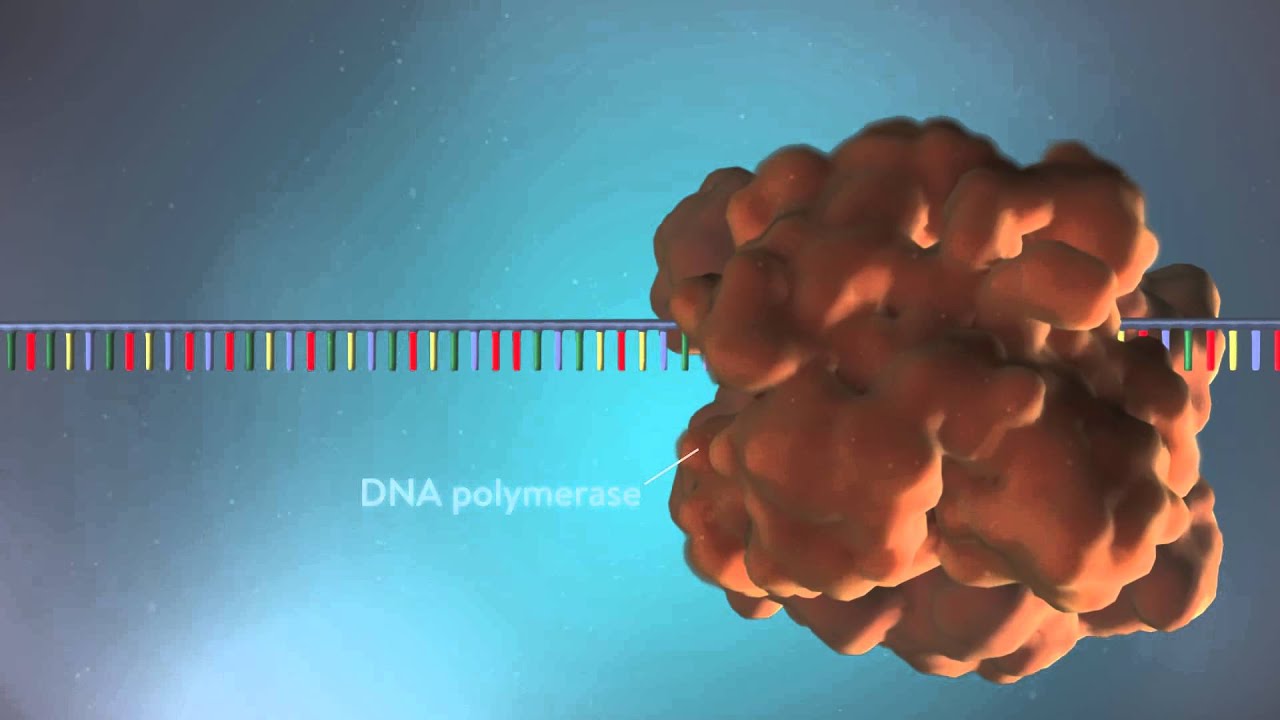This 3D animation shows you how DNA is copied in a cell. It shows how both strands of the DNA helix are unzipped and copied to produce two identical DNA molecules.
To download the subtitles (.srt) for this video, please use the following link: https://goo.gl/BSE3Ju and for more information, please view the video and explore related resources on our site: http://www.yourgenome.org/video/dna-replication
source

Your video is good. Thank you!!
Very helpful:')
Nice one video to understand the replication
I don't understand why teachers can't explain like this ; slow and straight to the point . All they do is draw a diagram ( totally not realistic ) and ask us to write notes . And we are like lol what just happened .
Nice
One of the most helpful video I've ever seen. Thanks for it.
In this video they don't explain the role of DNA POLYMERASE 1 and sigma !
Excellent animation.
I wished it showed how topoisomerase did it's work in separating the overcoiled knots of daughter DNA strands.
I love you
한국어 자막 감사합니다ㅠㅠ
Question please. The two new Dna molecules are they exactly corresponding(identical)?
I mean there is no different between the new molecules and the first one according to the sequence of nucleotides ?
How does it know where are the primers…. This is so mind blowing…
melhor que jubilut
👍
ขอบคุณค่ะ
Seu DNA pode chegar até a Lua? Como assim? Veja abaixo. https://youtu.be/q2MiKVxqne0
Thank you! This is awesome! Keep making videos!! ❤️
Tomorrow is my exam and here I am 😀 learning this for the first time in my life
Such a short clip is worth more than a thousand books.
Excellent explanation thank you
DNA replication is a proof of GOD
Evolution can't make this
Only GOD !
So, who made GOD?!
The true GOD can't be made
He is the origin of existing
The source of big bang
Can't be created
Cant be destroyed
Always there
And will be always here forever
He is not made of anything
He is the creater of everthing
He is wired
Can't be measured
Can't be seen
Can't be imagined
We are one of his products
Gave us five senses to feel and see his other products
He is the one that gave us the logic
So we can learn about his other products I the universe
But when u aske who made GOD
U are are assuming that he is similar to his products, that he must be made of something
U are using the 5 senses that was given to u to trying discover him
Rember that he is the one who gave u these senses
He is out of these senses
Outside of your brain limit to imagination
You can only belive in him
It’s the best video of DNA replication 😭
Nice ,your cannot explain it simply
very good
Sema video vera level, idha patha apram dha nalla purijidhu 🙂
2:13 As far as I know, the RNA Primase doesn't lay the RNA primer in the 5' 3' direction as shown here. It's placed in the 3' 5' direction because it follows the Helicase enzyme and only then the DNA polymerase adds the rows of DNA in the 5' 3' direction. Otherwise, great video ! Amazing animations and incredibly well presented.
Brilliant!
Which software did you use to render this video?
DNA G adds the RNA primer at the origin of replication (eukaryotes have several replication bubbles, which makes the replication process faster and causes lagging strands to form). This short RNA sequence is needed to initiate DNA polymerase III to start sequencing complementary nucleotides to the leading and lagging strands. DNA polymerase I comes in after DNA polymerase III to remove the RNA primers and fill in the gaps with new nucleotides. The nicks (broken phosphodiester bonds) in the lagging strands (Okazaki fragments) are then sealed by DNA ligase. RNA polymerase doesn’t need a helicase (DnaG) to unwind the strands, or an RNA primer (dnaB) to initiate transcription, unlike DNA polymerase, which makes it more prone to errors. But a promoter is required to initiate transcription. Both DNA and RNA are sequenced from 5’ to 3’, but RNA replaces Thymine with Uracil. So if the coding template reads 3’ A T T C G 5’ DNA transcription would look like 5’ T A A G C 3’ and it would be the same for RNA, except the removal of thymine would make it 5’ U A A G C 3’.
Wow… I loved the video, very helpful!
Funny how many more enzymes are known to be involved since this
طريقه شرح مشابهة للشرح في كتب الاحياء للسادس الاعدادي في العراق
amazing video, thank you!
You saved a life 😅 thank you for finally explaining it this way ,no lecturer could do so 🤷🏻♀️
Very nice
Savior ……………..this video is 😇😇😇😇
This is basic
Which animation software did you use?
THANK YOU SO MUCH!!
2:48 i think DNA polymerase I in Prokaryotes have both 5'–3' Exonuclease activity and Polymerase activity that replaces RNA primers with DNA by Nick Translation procedure.